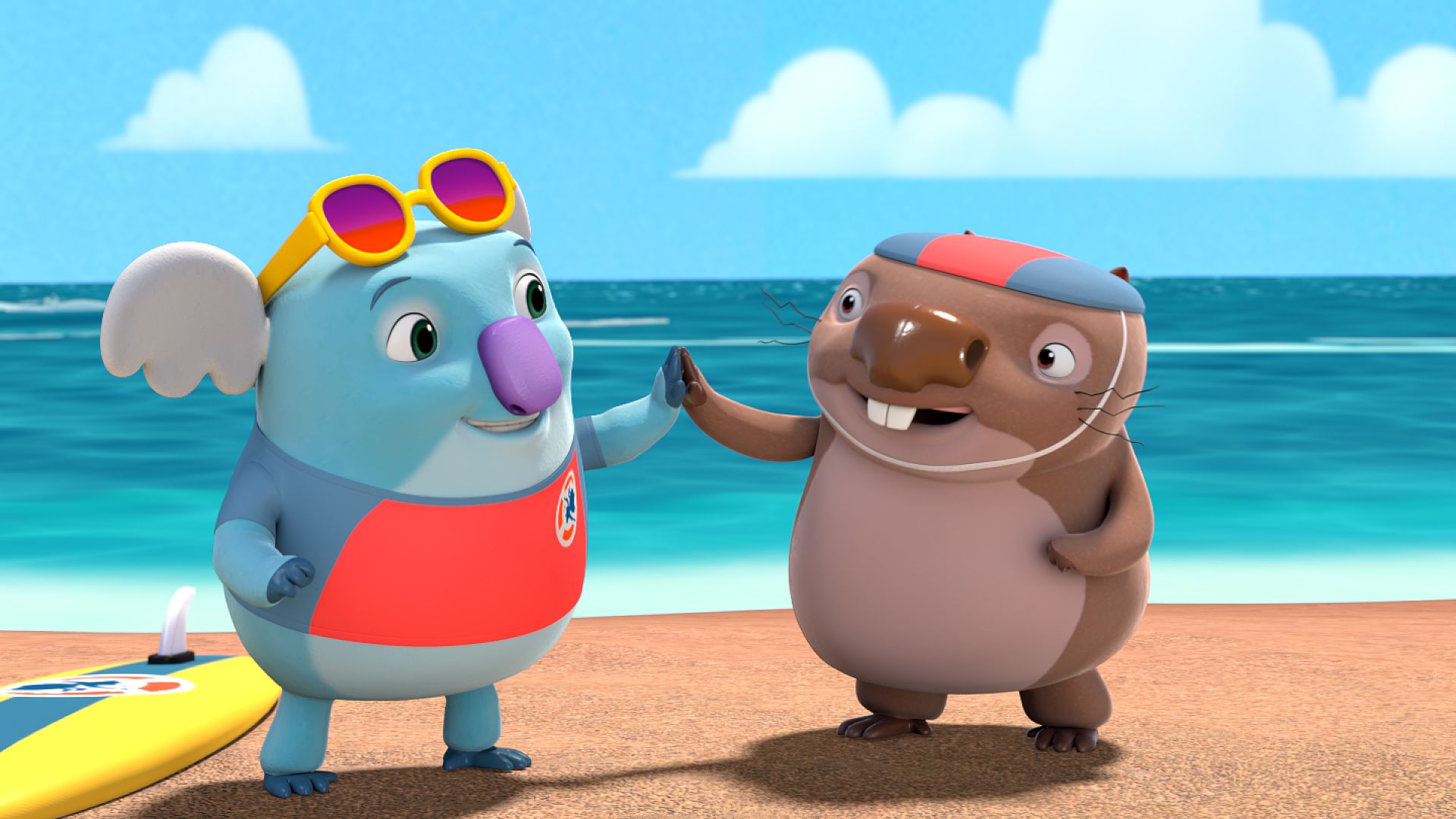
Lesson 3: Team Work

Learning intention: In this lesson, you will learn how team work and buddies can help keep you safe and make activities more enjoyable.
Task 1: Always Go In Pairs
Watch
Kangaroo Beach Series 3 Episode 9: ‘Buddy Day’.
Reflect
-
The Junior Cadets sing a water safety song that includes the rhyme ‘Always go in pairs.’ What other situations can you think of where it’s better or safer not to go alone? Think for 30 seconds by yourself, then share your ideas with others.
-
What did Gemma learn from Dougie about being a good buddy?
-
Can you think of a time when someone was a helpful buddy to you? How did it make you feel?
Explore
Gemma thinks she can scientifically prove that it is more enjoyable to swim with a buddy. Make a survey for your classmates to see if you can find out which activities they find more enjoyable done alone, or with a friend.
Down one side of a piece of paper, write or draw three to five popular activities. Make at least 3 of them outdoors activities. You could include riding a bike, reading, playing at the playground, going to a sports or dance class, walking a dog, drawing, even watching Kangaroo Beach. Then create two columns alongside this list, and write or draw ‘alone’ and ‘with a buddy’ at the top of them.
Now go for a walk amongst your classmates, and ask them if they prefer to do the activities alone or with a buddy. Make a tally mark in the correct column according to their answer. Share your answers with the class and see if you can work out the most popular social buddy activities.
Create
Create your own Buddy Day poster. Include the line “I can be a great buddy by…” and write a way that you can be a great buddy, especially to a younger friend.
Task 2: Rescue Role Play
Watch
Reflect
Talk to a partner about these questions:
- What do you do if you are swimming with a buddy and they get into trouble?
- What are the 3 important instructions you need to give your buddy?
- What do you do next? Why is that final step so important?
Explore
Pounce and his buddy do a role play to practice being safe in the water. Work with a buddy to act out a situation where you and a buddy are swimming and get into trouble. Make it clear with your bodies and facial expressions who is the swimmer in trouble, and who is the helper. Don’t forget to speak aloud the important words: ‘Stop! Relax and Don’t Panic!’ Swap roles so everyone gets a turn at being rescued.
Challenge: Can you add the message ‘never swim alone’ into your role play too? What about any other water safety rules you know?
Task 3: Safety Dance
Create
Make up a dance routine to the song from this episode of Kangaroo Beach (or another Kangaroo Beach song). Include moves that teach some of the swim safety messages, but without using any talking, just your moves.
Australian Curriculum Links
|
|
Foundation |
Year 1 |
Year 2 |
|
Moving Our Bodies |
practise fundamental movement skills in minor game and play situations participating in games that require them to be aware of personal safety in relation to game boundaries, rules and safe use of equipment |
investigate different ways of moving their body, and manipulating objects and space, and draw conclusions about their effectiveness |
|
|
Making Active Choices |
participate in a range of activities in natural and outdoor settings and explore the benefits of being physically active |
participate in a range of physical activities in natural and outdoor settings, and investigate factors and settings that make physical activity enjoyable |
|
|
Learning Through Movement |
follow rules to promote fair play in a range of physical activities discussing rules of different games that relate to safety, boundaries and appropriate use of equipment |
apply strategies to work collaboratively when participating in physical activities |
|
Australian National Benchmarks for Swimming and Water Safety
|
|
Fundamental Stage |
Acquisition Stage |
|
Milestone |
Identify rules for safe behaviour at aquatic environments |
Understand and respect safety rules for a range of aquatic environments: Never swim alone |
|
|
Fundamental Stage |
Acquisition Stage |
|
Milestone |
N/A |
Rescue a person using a non-swimming rescue technique with non-rigid aids |